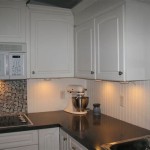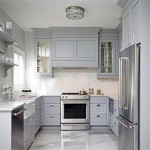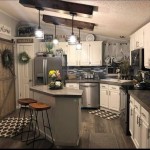Backsplash Tiles for White Kitchens: A Comprehensive Guide
The white kitchen remains a timeless design choice, celebrated for its clean aesthetic, versatility, and ability to maximize natural light. A crucial element that contributes to the overall success of a white kitchen design is the backsplash. It provides an opportunity to introduce color, texture, and personality, effectively preventing the space from feeling sterile or monotonous. Selecting the right backsplash tile requires careful consideration of various factors, including material, color, pattern, size, and installation style. This article explores the nuances of choosing backsplash tiles for white kitchens, offering insights into popular options and design considerations.
Material Selection: Durability and Aesthetics
The material of the backsplash tile significantly impacts its durability, maintenance requirements, and overall aesthetic appeal. Various materials are available, each with unique characteristics that influence the kitchen's ambiance and long-term functionality.
Ceramic Tiles: Ceramic tiles are a widely popular choice for kitchen backsplashes due to their affordability, durability, and ease of maintenance. They are resistant to water, stains, and heat, making them well-suited for the demanding environment of a kitchen. Ceramic tiles are available in a vast array of colors, sizes, shapes, and patterns, offering extensive design possibilities. They can mimic the look of natural stone, wood, or even metal, providing flexibility in achieving the desired aesthetic. Their non-porous surface makes them easy to clean with common household cleaners.
Porcelain Tiles: Porcelain tiles are similar to ceramic tiles but are denser and more durable. They are fired at higher temperatures, resulting in a lower water absorption rate, making them even more resistant to stains and moisture. Porcelain tiles are an excellent choice for kitchens that experience heavy use or are prone to spills. They are also more resistant to cracking and chipping than ceramic tiles, ensuring long-lasting beauty. Like ceramic tiles, porcelain tiles are available in a wide range of styles and finishes.
Glass Tiles: Glass tiles offer a sleek and modern look, reflecting light and adding a sense of brightness to the kitchen. They are available in various colors, including translucent, opaque, and iridescent finishes. Glass tiles are non-porous and easy to clean, making them resistant to stains and mold. However, they can be more susceptible to scratches than ceramic or porcelain tiles and may require more delicate cleaning products. The glossy surface of glass tiles can also highlight imperfections in the wall, so proper wall preparation before installation is crucial.
Natural Stone Tiles: Natural stone tiles, such as marble, granite, travertine, and slate, offer a luxurious and timeless aesthetic. Each stone has unique veining and variations, adding character and depth to the backsplash. Natural stone tiles require sealing to protect them from stains and moisture. They can be more porous than ceramic or porcelain tiles, requiring regular maintenance and cleaning with specific stone cleaners. While natural stone tiles are a more expensive option, they add significant value and elegance to the kitchen.
Metal Tiles: Metal tiles, such as stainless steel, copper, or aluminum, offer a contemporary and industrial aesthetic. They are durable, heat-resistant, and easy to clean. Metal tiles can be used as accents or for the entire backsplash, adding a touch of sophistication and visual interest. However, metal tiles can be prone to scratching and may require special cleaning products to maintain their luster. They can also be more expensive than ceramic or porcelain tiles.
Color and Pattern: Harmonizing with White Cabinets
The color and pattern of the backsplash tile play a crucial role in complementing the white cabinets and enhancing the overall design scheme. The choice of color and pattern can dramatically influence the kitchen's ambiance, from creating a subtle and understated look to adding a bold and dramatic statement.
Neutral Colors: Neutral colors, such as white, gray, beige, and cream, are classic choices for white kitchens. They create a cohesive and harmonious look, allowing the white cabinets to remain the focal point. Neutral-colored backsplash tiles can be paired with textured surfaces or subtle patterns to add visual interest without overwhelming the space. Using different shades of neutral colors can also create depth and dimension.
Bold Colors: Bold colors, such as blue, green, red, or yellow, can add a pop of personality and vibrancy to a white kitchen. These colors can be used sparingly as accents or for the entire backsplash, depending on the desired effect. When using bold colors, it is essential to consider the overall color scheme of the kitchen and ensure that the backsplash complements the other elements, such as the countertops, flooring, and accessories. A colorful backsplash can become a focal point, drawing the eye and adding character to the space.
Patterned Tiles: Patterned tiles can add visual interest and texture to a white kitchen. Geometric patterns, floral patterns, or subway tile patterns in a herringbone or stacked bond arrangement can create a unique and stylish backsplash. When using patterned tiles, it is important to consider the scale of the pattern and ensure that it is appropriate for the size of the kitchen. Large-scale patterns can be overwhelming in small kitchens, while small-scale patterns may be lost in large kitchens. Patterned tiles can also be used to create a focal point above the cooktop or sink.
Subway Tiles: Subway tiles are a timeless and versatile choice for kitchen backsplashes. They are typically rectangular in shape and can be arranged in various patterns, such as a traditional horizontal layout, a vertical stack, or a herringbone pattern. Subway tiles are available in a wide range of colors and finishes, from classic white to bold and vibrant hues. They can be paired with contrasting grout colors to add visual interest and highlight the pattern. Subway tiles are a popular choice for both traditional and contemporary kitchens.
Mosaic Tiles: Mosaic tiles are small tiles that are arranged together to create a larger pattern or design. They are available in various materials, including glass, ceramic, and stone. Mosaic tiles can add intricate detail and texture to a white kitchen. They can be used as accents or for the entire backsplash, depending on the desired effect. Mosaic tiles are a popular choice for creating a focal point above the cooktop or sink. They can also be used to add a touch of glamour and sophistication to the space.
Size and Installation: Creating Visual Impact
The size and installation style of the backsplash tile significantly impact the overall visual impact of the kitchen. The choice of tile size and the way it is installed can create different effects, from a clean and minimalist look to a more textured and dynamic design.
Tile Size: The size of the backsplash tile should be proportional to the size of the kitchen. Large tiles can make a small kitchen feel more spacious, while small tiles can add intricate detail and texture to a larger kitchen. Consider the scale of the pattern and ensure that it is appropriate for the size of the space. Mixing different tile sizes can create a more dynamic and visually interesting backsplash.
Installation Style: The way the backsplash tile is installed can significantly impact its appearance. A traditional horizontal layout creates a clean and classic look, while a vertical stack adds a modern and minimalist touch. A herringbone pattern adds visual interest and texture, while a diagonal layout can create a more dynamic and playful design. Consider the overall style of the kitchen and choose an installation style that complements the other elements in the space.
Grout Color: The grout color can significantly impact the appearance of the backsplash tile. A contrasting grout color can highlight the pattern and add visual interest, while a matching grout color creates a more seamless and cohesive look. Consider the color of the tile and the overall style of the kitchen when choosing a grout color. Dark grout can be used to mask dirt and stains, while light grout can brighten up the space.
Backsplash Height: The height of the backsplash can vary depending on the design and functionality of the kitchen. A standard backsplash typically extends from the countertop to the bottom of the upper cabinets. However, a taller backsplash can be used to create a more dramatic effect or to protect the wall from splatters and stains. Consider the height of the upper cabinets and the overall layout of the kitchen when determining the appropriate backsplash height.
Professional Installation: While some homeowners may choose to install the backsplash themselves, professional installation is recommended to ensure a high-quality and long-lasting result. Professional installers have the experience and expertise to properly prepare the wall, install the tile, and apply the grout. They can also ensure that the tile is level and properly aligned, creating a seamless and visually appealing backsplash. Professional installation can save time and effort and ensure that the backsplash is installed correctly the first time.

Quick Guide 5 Beautiful Backsplash Tiles For White Kitchens Becki Owens

Kitchen Backsplash Tile Designs That Are Envy Instilling Mir Mosaic

65 Kitchen Backsplash Ideas For Every Design Style In 2025

Kitchen Backsplash Ideas Inspiring Photo Gallery

55 White Kitchen Ideas That Never Go Out Of Style

24 Best Backsplash Tiles For Kitchen Stylish Tile Designs

77 Inspiring Kitchen Backsplash Ideas For 2024

White Backsplash With Countertops Stone Tile

Backsplash Tile Ideas For Your Kitchen Flooring America

7 Diy Kitchen Backsplash Ideas That Are Easy And Inexpensive Epicurious








